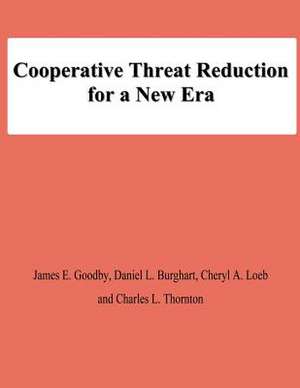Cooperative Threat Reduction for a New Era
Autor James E. Goodby, Daniel L. Burghart, Cheryl A. Loeben Limba Engleză Paperback
Preț: 103.27 lei
Nou
Puncte Express: 155
Preț estimativ în valută:
19.76€ • 20.69$ • 16.35£
19.76€ • 20.69$ • 16.35£
Carte disponibilă
Livrare economică 15-29 martie
Preluare comenzi: 021 569.72.76
Specificații
ISBN-13: 9781478194422
ISBN-10: 1478194421
Pagini: 70
Dimensiuni: 216 x 279 x 4 mm
Greutate: 0.19 kg
Editura: CREATESPACE
ISBN-10: 1478194421
Pagini: 70
Dimensiuni: 216 x 279 x 4 mm
Greutate: 0.19 kg
Editura: CREATESPACE
